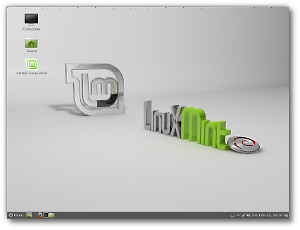Can we trust the InterWebs for doing the Census? For voting? For other really important stuff? Well, after all we trust it for our LOLcats, right?
2020 Census will be done by Internet
“Add paper census questionnaires to the long list of everyday items becoming quaint vestiges of tired technology, like landline phones, television armoires and butterfly ballots.
The Census Bureau already has started offering an Internet option to the 250,000 households it selects every month at random for the American Community Survey. Since becoming available in January, more than half the responses have come in on a secure site that requires codes and PIN numbers.
The bureau expects to use the Internet — plus smart phones and other technologies yet to be invented — for the next decennial census, in 2020.
The increasing reliance on technology is designed to save money. The 2010 Census cost $96 per household, including the American Community Survey that has replaced the old long form. That cost has more than doubled in two decades, up from $70 in 2000 and $39 as recently as 1990.
The factors pushing costs higher are unlikely to abate.
Increased diversity means questionnaires and ad campaigns must be produced in more languages. Fewer Americans willingly participate in surveys, making it more expensive to gather statistics about them. And the Census Bureau has been pressured to make its count more accurate, especially for smaller groups of people that tend to be undercounted.
But under prodding by Congress, the bureau is trying to keep the per-household cost stable, though the total cost inevitably will rise with inflation and population growth.
‘Congress has instructed us to find a way to do things for no more money,’ said Jim Dinwiddie, a senior census official who helps oversee the decennial census. ‘So we’re looking at what things we might do that have a dramatic impact on costs.’
Chief among them is using the Internet more. Though 60 other census surveys have an Internet option, the American Community Survey is by far the largest.
The Census Bureau spent two years running preliminary experiments in how people responded to American Community Survey questions on the computer screen. Five rounds of testing involved tracking eye movements as people scanned a Web page looking for which answer they wanted to check.
The households selected for the survey still get their first contact the old-fashioned way, with a mailed letter telling them the questionnaire is on its way. Then they receive a letter telling them how to respond over the Internet. If they don’t use that option, they get a 28-page paper form a few weeks later.
The questions are listed on a green-tinted Web page that takes roughly 40 minutes to complete, with 24 questions on housing alone and up to 48 questions about every household resident.
‘There are benefits to doing it online,’ said Todd Hughes, a senior census official working on the American Community Survey, as he illustrated how the computer catches contradictory answers and seeks clarification.
The savings are potentially huge, said Frank Vitrano, associate director for the 2020 Census.
‘It reduces the cost of printing, the cost of postage and the cost of data capture off paper forms,’ he said. ‘And we see it as more convenient for the public.’
Vitrano said other cost-cutting options also are being studied for the 2020 count.
Administrative records, including those kept by the Internal Revenue Service, the Social Security Administration, and the Department of Housing and Urban Development, may be another source of statistics that the Census Bureau can mine. That could diminish the need for what in 2010 was hundreds of thousands of temporary employees hired to check addresses, make follow-up calls and knock on doors when people didn’t respond quickly after the census form was mailed to their homes.
The bureau also is contemplating a promotional campaign to encourage people to contact the them and pre-register, providing an e-mail address so the questionnaire can be sent electronically.
But in an endeavor as big as a national census, final decisions on design and technology will have to be in place at least two years in advance. That means whatever looks fresh and new in 2018 will look a little stale by census day.
‘The census is always going to look a little out of date,’ Vitrano said. ‘There will be a time in 2017 or 2018 when we have to lock in decisions. Something new will come in 2019, and our technology is going to look obsolete.'”



 This past week the Linux Mint Team released a new LMDE (Linux Mint Debian Edition) for 2013! Linux Mint is my favorite Linux client distro, and the main release is based on Ubuntu. This edition is based on “raw” Debian.
This past week the Linux Mint Team released a new LMDE (Linux Mint Debian Edition) for 2013! Linux Mint is my favorite Linux client distro, and the main release is based on Ubuntu. This edition is based on “raw” Debian. The American Geophysical Union announced this week that:
The American Geophysical Union announced this week that: